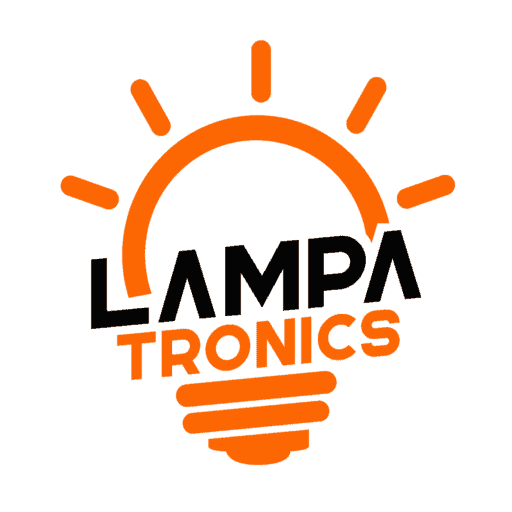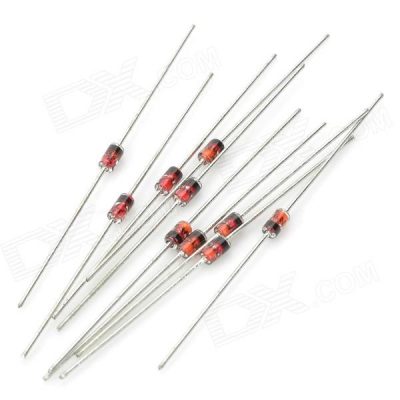7415( Quad 2-input NAND gate)
Description
The 7415 is a Quad 2-input NAND Schmitt Trigger IC. It is part of the 7400 series of logic ICs and is used to provide NAND logic operations with Schmitt Trigger inputs for noise immunity and clean signal transitions.
7415 IC Description:
The 7415 is a Quad 2-input NAND gate with Schmitt Trigger inputs. A Schmitt Trigger is a type of input that provides hysteresis, meaning it has different threshold voltages for transitioning from low to high and high to low. This makes the IC particularly useful in environments where the input signals might have noise, slow transitions, or other irregularities that could cause unpredictable behavior. The Schmitt Trigger ensures that these inputs are cleaned up, providing a stable, reliable output.
Key Features:
- Quad 2-input NAND gates: The IC contains four independent NAND gates, each with two inputs.
- Schmitt Trigger Inputs: The inputs are Schmitt Trigger inputs, providing hysteresis to improve noise immunity and clean up noisy input signals.
- Low Power Consumption: The IC uses CMOS technology, meaning it operates with low power consumption while still providing fast switching speeds.
- Wide Voltage Range: Typically operates from 4.5V to 5.5V, with 5V being the standard operating voltage.
- High Noise Immunity: The Schmitt Trigger action helps in eliminating noise and ensures reliable operation in environments with noisy or slow-changing input signals.
- High-Speed Operation: It provides fast switching times, making it suitable for high-speed digital logic applications.
Pin Configuration (14-pin package):
Here is the pinout for the 7415:
| Pin | Function |
|---|---|
| 1 | Input A (NAND Gate 1) |
| 2 | Input B (NAND Gate 1) |
| 3 | Output (NAND Gate 1) |
| 4 | Input A (NAND Gate 2) |
| 5 | Input B (NAND Gate 2) |
| 6 | Output (NAND Gate 2) |
| 7 | Ground (GND) |
| 8 | Input A (NAND Gate 3) |
| 9 | Input B (NAND Gate 3) |
| 10 | Output (NAND Gate 3) |
| 11 | Input A (NAND Gate 4) |
| 12 | Input B (NAND Gate 4) |
| 13 | Output (NAND Gate 4) |
| 14 | Vcc (Power Supply) |
How It Works:
- NAND Logic Gates:
- A NAND gate is a basic digital logic gate that provides a low (0) output only when both of its inputs are high (1). If either input is low, the output is high (1).
- The 7415 has four independent 2-input NAND gates, each performing this logic operation.
- Schmitt Trigger Inputs:
- The Schmitt Trigger inputs ensure that noisy or slow-changing signals are properly cleaned up before being fed into the logic gate.
- In a Schmitt Trigger, the input has two different threshold voltages: one for transitioning from low to high (Vt+) and one for transitioning from high to low (Vt-). This hysteresis effect provides noise immunity and ensures stable transitions between logic states.
- For example, if the input signal fluctuates between 0V and 5V, the Schmitt Trigger will only recognize clean transitions at specific threshold voltages, preventing false triggering caused by noise or slow signal edges.
- Logic Functionality:
- Each of the four gates in the 7415 works independently to implement the NAND logic function:
- If both inputs are high (logic 1), the output is low (logic 0).
- If either or both inputs are low, the output is high.
- Each of the four gates in the 7415 works independently to implement the NAND logic function:
- High-Speed and Low Power:
- The 7415 is designed with CMOS technology, offering low power consumption compared to older TTL logic gates, while maintaining high-speed operation for efficient digital signal processing.
Truth Table for a 2-input NAND Gate:
| Input A | Input B | Output |
|---|---|---|
| 0 | 0 | 1 |
| 0 | 1 | 1 |
| 1 | 0 | 1 |
| 1 | 1 | 0 |
Each of the four gates on the 7415 follows this truth table.
Applications:
- Signal Conditioning:
- The Schmitt Trigger inputs make the 7415 ideal for signal conditioning in noisy environments. It cleans up slow or noisy input signals, ensuring that the logic gates receive clean, stable signals for proper operation.
- Digital Logic Circuits:
- The 7415 can be used in any application where NAND gates are needed, such as in combinational logic circuits, state machines, control systems, and more.
- Timing Circuits:
- In timing circuits, the 7415 can be used for implementing pulse generation, signal inversion, and timing applications, especially where noise immunity is important.
- Debouncing:
- The Schmitt Trigger feature makes the 7415 useful for debouncing switches. Mechanical switches often generate noise or multiple transitions when pressed, and the 7415 cleans up those signals to provide a clean logical transition.
- Memory Decoding:
- The 7415 can be used in memory decoding circuits, where it can decode input address signals into control signals for selecting different memory locations or peripherals.
- Data Routing:
- In multiplexing and demultiplexing systems, the 7415 can help with clean signal routing and processing by using its NAND gates with noise-immune inputs.
Electrical Characteristics:
- Supply Voltage (Vcc): Typically 5V (operates from 4.5V to 5.5V).
- Input Voltage (Vih): Typically 2V for a logical high.
- Output Voltage (Vol): The low output voltage is typically close to 0V when the output is active.
- Propagation Delay: The delay between input and output transitions is relatively low, thanks to the high-speed CMOS technology used in the 7415.
- Low Power Consumption: Being a CMOS device, the 7415 operates with low power consumption while offering efficient performance.
Only logged in customers who have purchased this product may leave a review.
- Image
- SKU
- Rating
- Price
- Stock
- Availability
- Add to cart
- Description
- Content
- Weight
- Dimensions
- Additional information




Reviews
There are no reviews yet.